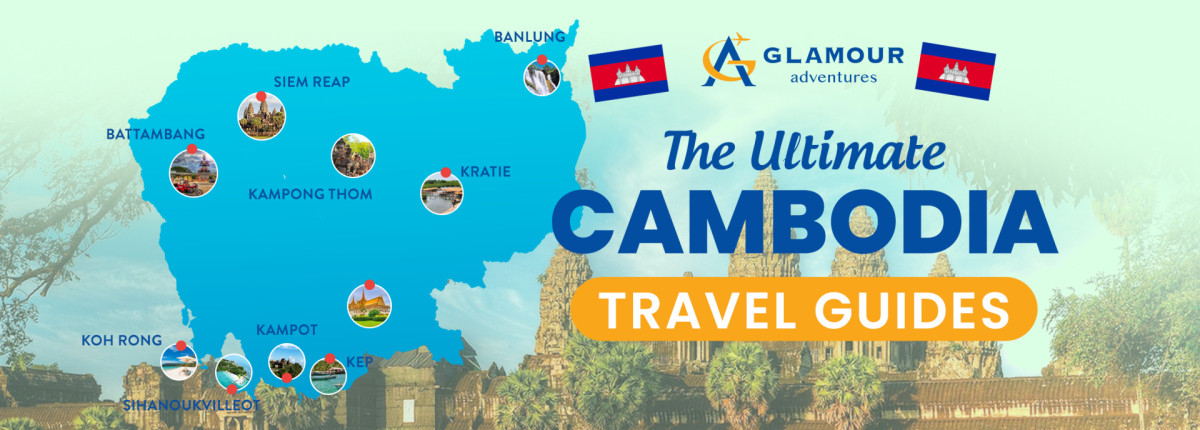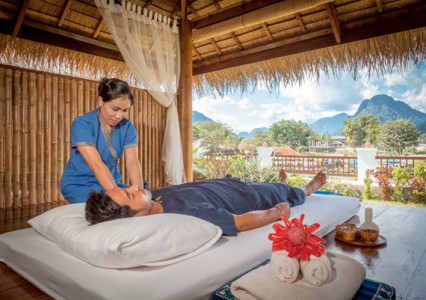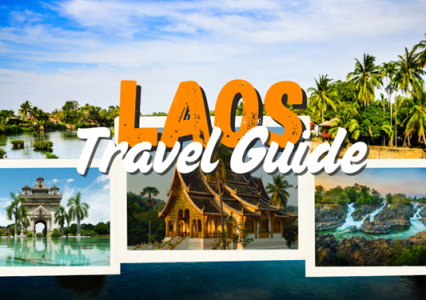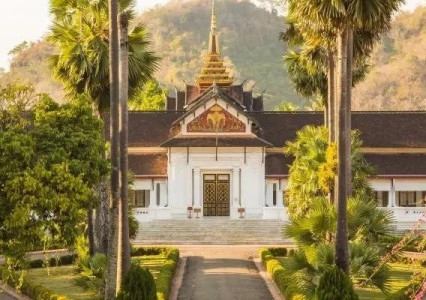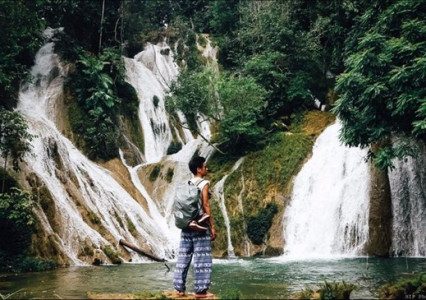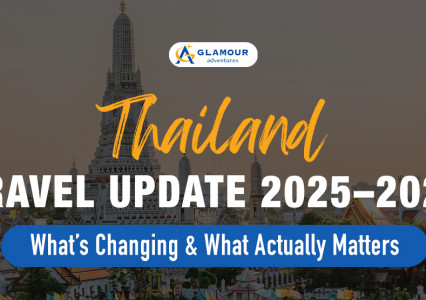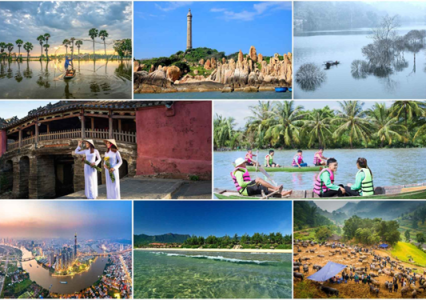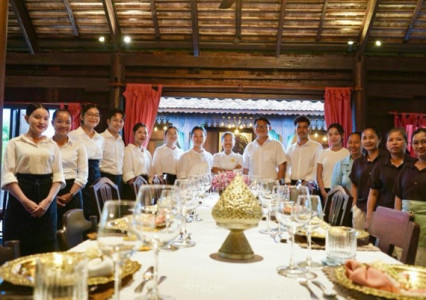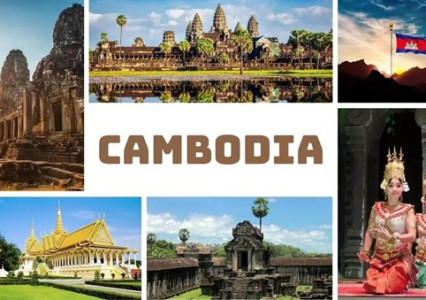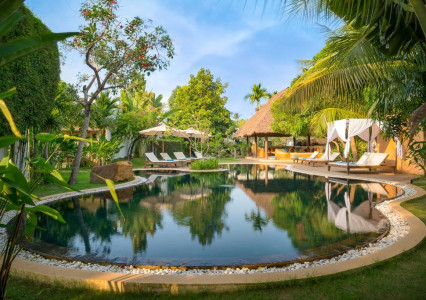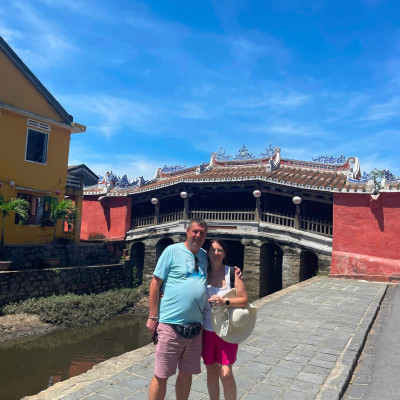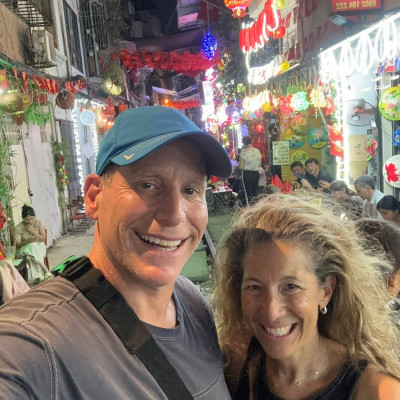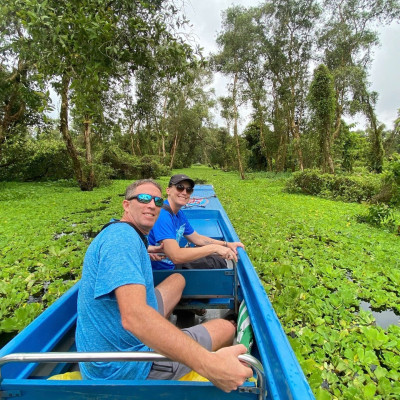The Ultimate Guide to Cambodia – Everything You Need for an Amazing Holiday
1. Introduction to Cambodia
Capital: Phnom Penh
Area: 181,035 km²
Population (2024): Approx. 17.1 million
Timezone: UTC +7
Located in the heart of mainland Southeast Asia, Cambodia is a land of ancient wonders, rich traditions, and vibrant energy. Best known as the home of Angkor Wat—the world’s largest religious monument and a UNESCO World Heritage Site—Cambodia’s legacy stretches far beyond its temples. With lush jungles, tranquil rice fields, and a coastline dotted with hidden beaches, this kingdom offers a unique blend of nature, spirituality, and history.
Cambodia’s culture is deeply rooted in its past, shaped by centuries of Khmer civilization and Buddhist influence. Its traditional arts—such as Apsara dance, shadow puppetry, and silk weaving—continue to thrive alongside a growing creative scene. The country’s spiritual life is equally rich, from serene pagodas to ancient ritual practices passed down through generations.
Despite a turbulent history, the Cambodian people are known for their enduring optimism, kindness, and welcoming nature. Travelers often leave with unforgettable memories of genuine local hospitality and heartfelt connections. Combined with its affordability, flavorful cuisine, and ever-growing infrastructure, Cambodia is fast becoming one of Southeast Asia’s most rewarding destinations for curious and compassionate explorers.
2. Geography of Cambodia
Situated in the southern portion of the Indochina Peninsula, Cambodia shares borders with Thailand to the west and northwest, Laos to the north, and Vietnam to the east and southeast. To the south, it opens onto the Gulf of Thailand, giving the country access to beautiful coastal stretches. Cambodia covers approximately 181,035 km², forming a roughly oval shape with a gently undulating landscape.
Terrain
Cambodia’s geography is defined by a central lowland plain, surrounded by mountains and highlands. The heart of the country is dominated by the Tonle Sap Basin, a massive floodplain fed by the Tonle Sap Lake and the Mekong River. This region is vital for rice cultivation and fishing, forming the agricultural backbone of the nation.
The Cardamom Mountains and Elephant Mountains lie to the southwest, forming a rugged natural barrier near the coast, while the Dângrêk Mountains line the northern border with Thailand. Elevations in Cambodia are relatively modest, with the highest peak, Phnom Aural, reaching 1,813 meters above sea level.
Climate
Cambodia enjoys a tropical monsoon climate with two main seasons:
- Dry Season (November to April), dominated by the northeast monsoon
- Rainy Season (May to October), brought by the southwest monsoon
Temperatures typically range between 21°C and 35°C throughout the year. Humidity is consistently high, often exceeding 80%, especially during the wet season. The country receives between 1,000 and 1,500 mm of annual rainfall, with the heaviest precipitation in the months of August and September.
Ecosystems
Cambodia boasts a diverse range of ecosystems, from dense tropical rainforests to seasonally flooded plains. It is home to over 2,000 plant species, over 500 bird species, and a variety of mammals, including rare and endangered species such as the Indochinese tiger, Asian elephant, and Irrawaddy dolphin.
Key conservation areas include the Cardamom Mountains rainforest, the Tonle Sap Biosphere Reserve, and the Prek Toal Bird Sanctuary. These regions support a vibrant biodiversity and are critical for eco-tourism, birdwatching, and sustainable development.
Cambodia’s natural beauty and ecological richness continue to draw travelers, researchers, and conservationists eager to explore one of Southeast Asia’s most enchanting environments.
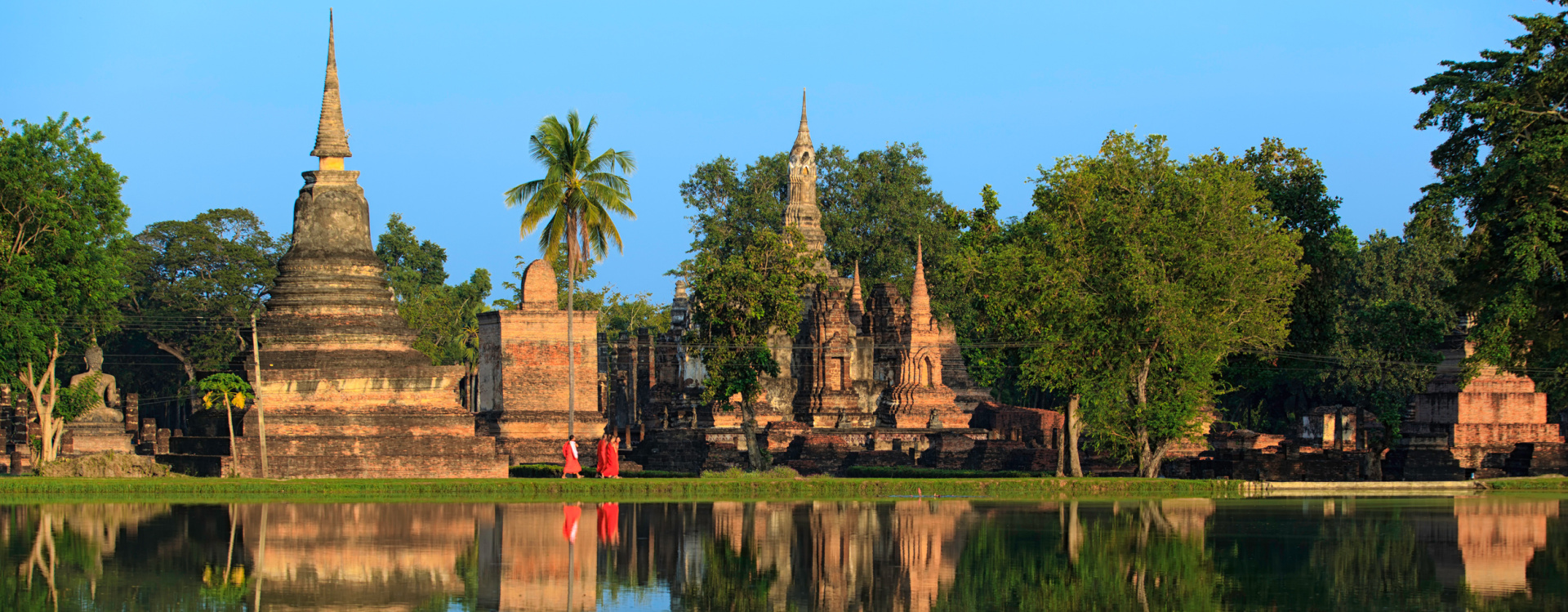
3. Best Time to Travel to Cambodia
Cambodia enjoys a warm, tropical climate year-round, making it a great destination in any season. However, the dry season from November to April is generally considered the best time to visit, especially for outdoor activities, temple-hopping, and beach escapes. Understanding Cambodia’s two main seasons—dry and wet—can help you plan the perfect trip based on your interests and travel style.
Dry Season (November to April): Best for Exploring and Beach Days
The dry season is the most popular time to visit Cambodia. With low humidity, clear skies, and pleasant temperatures ranging from 24–32°C, this period is ideal for exploring ancient temples, bustling cities, and tranquil countryside.
- Siem Reap & Angkor Wat: The temples are most enjoyable in the cooler months of December to February, when mornings are crisp and crowds are manageable.
- Phnom Penh: The capital is lively and vibrant during this time, with minimal rainfall to disrupt sightseeing.
- Cambodian Coast (Sihanoukville, Kep, Kampot, Koh Rong): From December to April, the beaches are at their best—sunny skies, calm seas, and perfect swimming conditions.
Wet Season (May to October): Lush Landscapes & Fewer Crowds
The wet or monsoon season brings daily showers—usually in the afternoon or evening—that refresh the landscape without ruining travel plans. Temperatures range from 25–35°C, and humidity increases, especially in July and August.
- Siem Reap: Fewer tourists, dramatic skies, and the temples surrounded by lush greenery create amazing photo opportunities.
- Tonle Sap Lake: Water levels rise, transforming the lake into a vast inland sea—ideal for boat tours and birdwatching.
- Countryside Adventures: Rice paddies are vibrant green and local festivals begin to pop up, giving you a more authentic experience.
| Interest | Best Months | Notes |
|---|---|---|
| Temple sightseeing | Dec – Feb | Cool, dry weather with clear skies |
| Beach holidays | Dec – April | Perfect for coastal and island getaways |
| Cultural festivals | Apr (Khmer New Year) | Water fights, parades, and local celebrations |
| Lush landscapes | Jul – Oct | Green countryside, great for photography |
| Avoiding crowds | May – Oct | Low season rates and fewer tourists |
Summary:
- Best overall time to visit: December to February
- Best for beaches and islands: December to April
- Best for budget travelers and greenery: May to October
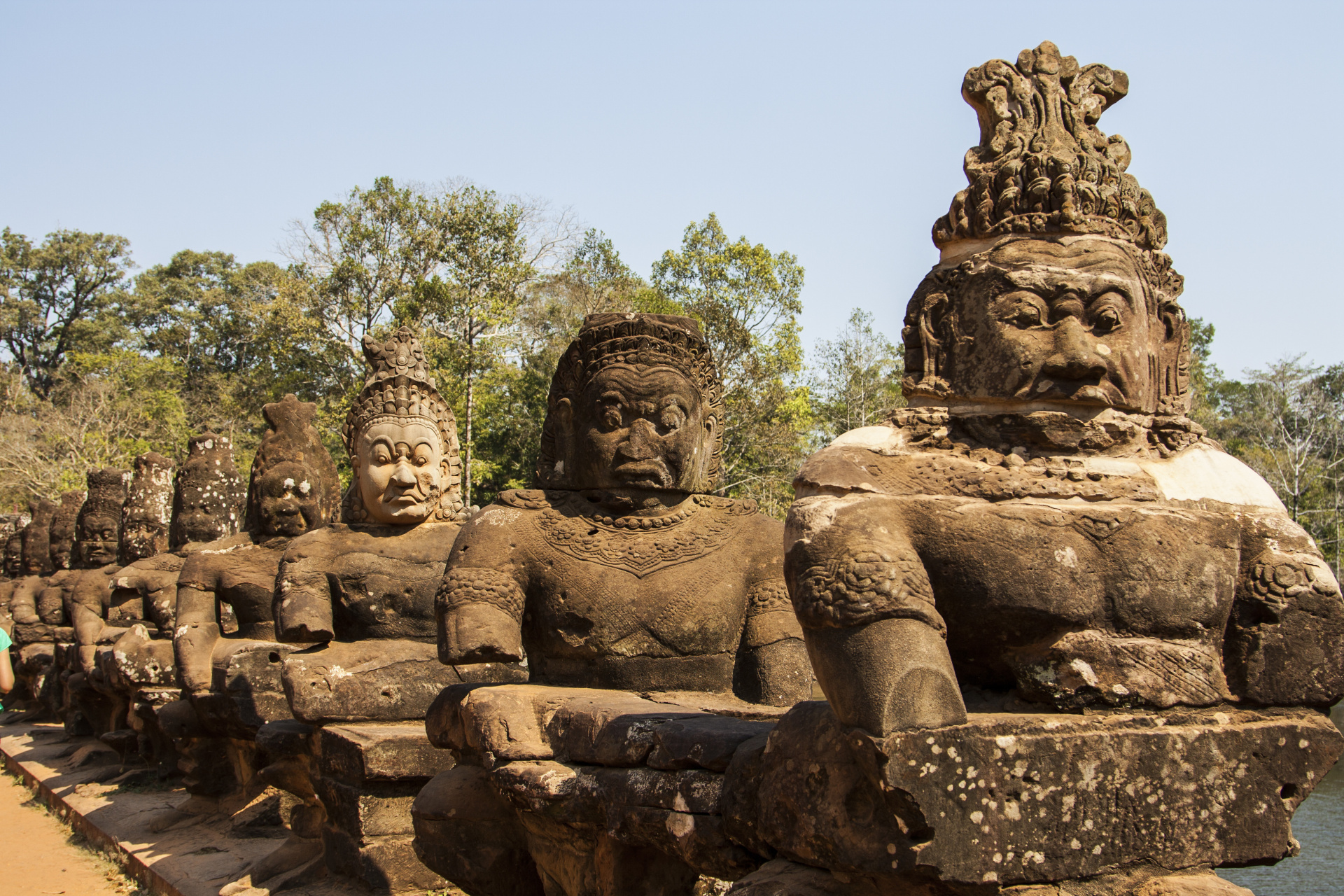
4. Best Places to Visit in Cambodia
From the world-famous temples of Angkor to the sleepy riverside towns and stunning southern beaches, Cambodia offers travelers a unique blend of history, culture, and natural beauty. Whether you’re here for a few days or a few weeks, these top destinations will show you the very best of the Kingdom of Wonder.
Siem Reap – Gateway to Angkor Wat
No trip to Cambodia is complete without a visit to Siem Reap, the vibrant town that serves as the base for exploring the majestic temples of Angkor Wat. As the largest religious monument in the world, Angkor Wat is a breathtaking symbol of Khmer architecture and ancient ingenuity.
But Siem Reap offers more than just ruins—enjoy buzzing night markets, street food stalls, cultural performances, and charming cafes. Wake up early to catch the iconic Angkor sunrise, then spend your afternoons relaxing with a traditional Khmer massage.
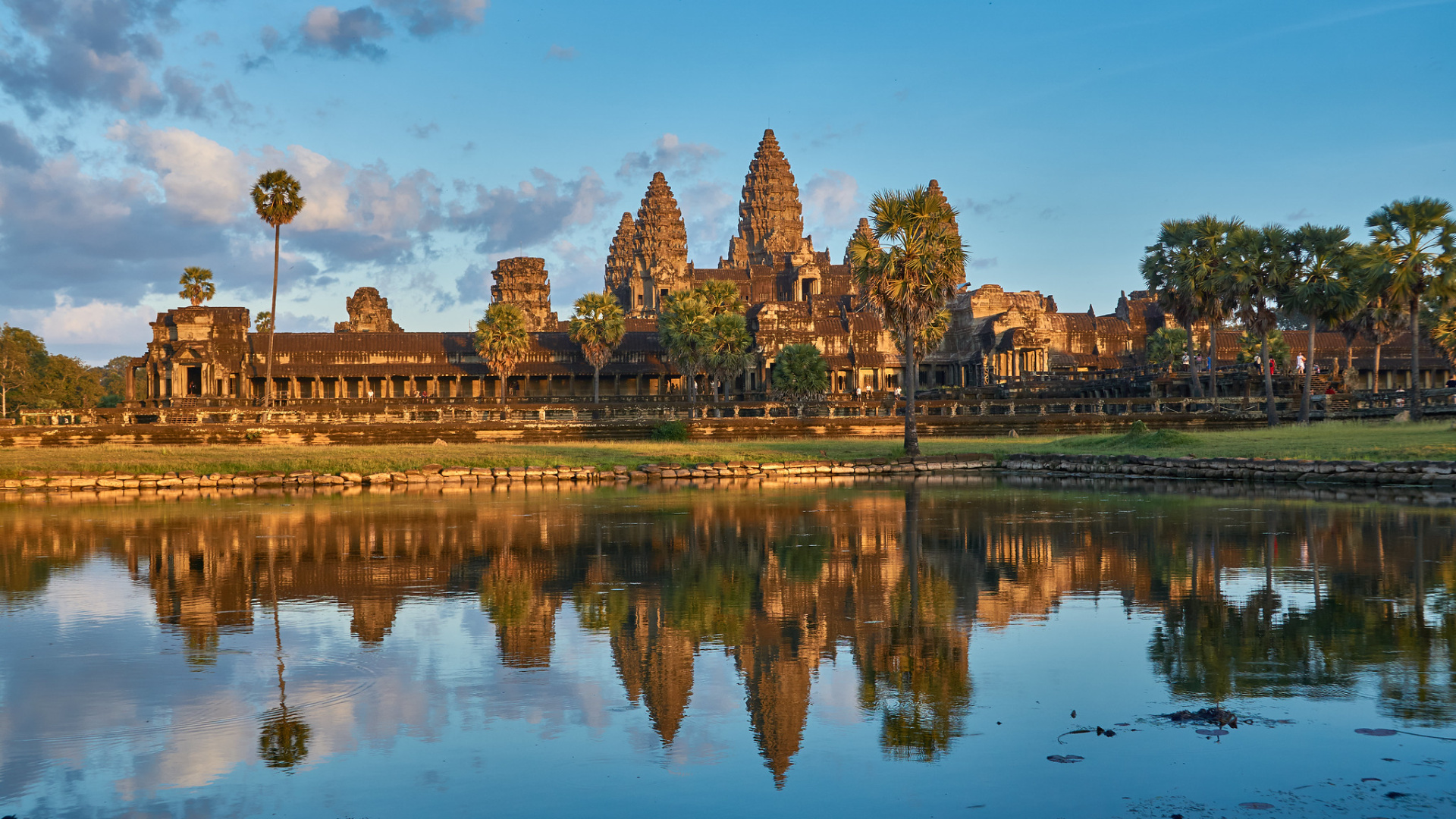
Phnom Penh – The Capital with a Complex Past
Cambodia’s capital, Phnom Penh, sits at the confluence of the Mekong and Tonle Sap rivers. It’s a city of contrasts—modern rooftop bars overlook golden temples, while French colonial buildings line bustling boulevards.
History lovers can explore the sobering Tuol Sleng Genocide Museum and Choeung Ek Killing Fields, both essential to understanding Cambodia’s recent history. On a lighter note, visit the Royal Palace, stroll along the riverside promenade, or dive into the flavors of Cambodian cuisine at the Central Market.
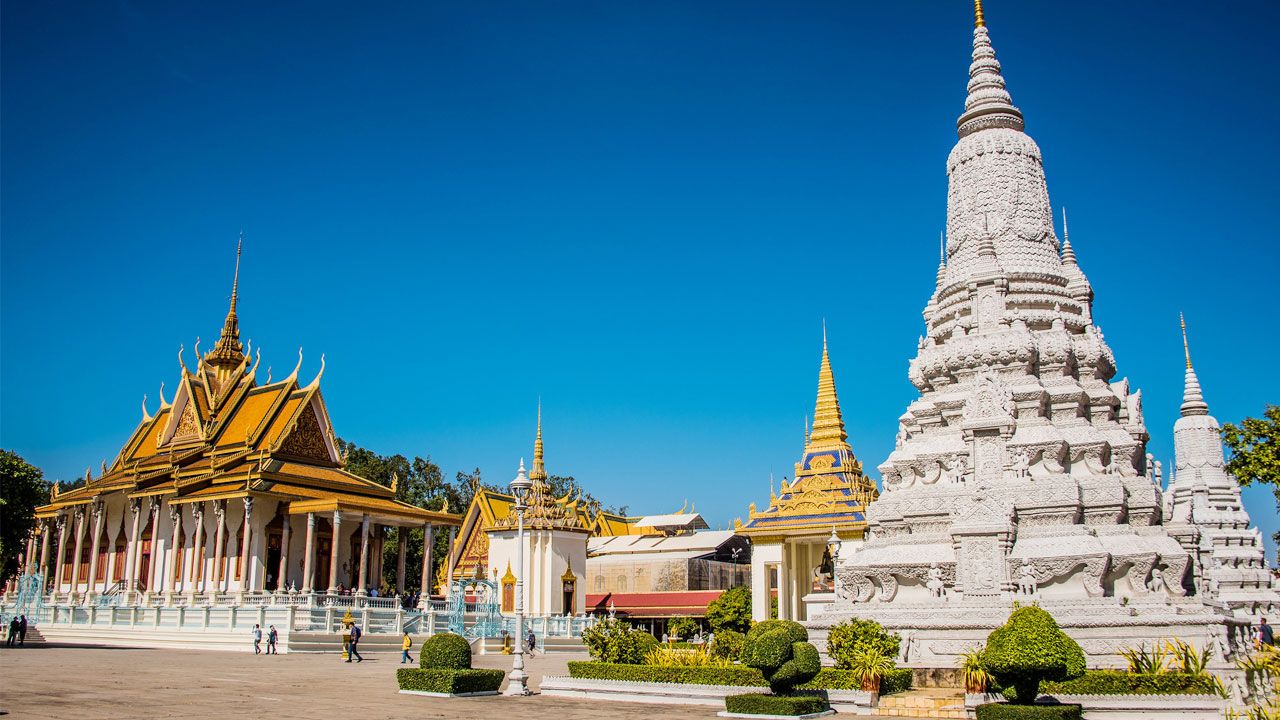
Kampot – Colonial Charm by the River
Nestled along the banks of the Praek Tuek Chhu River, Kampot is a laid-back town famous for its French colonial architecture, pepper plantations, and gorgeous sunsets. It's the perfect spot to unwind.
Take a boat ride through the mangroves, explore nearby caves, or head up to Bokor National Park for misty mountain views and abandoned hill station ruins. Don’t miss a taste of Kampot pepper—world-renowned for its quality and flavor.
Kep – Seafood and Serene Shores
Just a short drive from Kampot, the sleepy coastal town of Kep offers tranquil beaches and the freshest crab you’ll ever eat. Head to the famous Crab Market for lunch right by the sea, then relax on the peaceful Kep Beach or hop on a boat to Rabbit Island (Koh Tonsay) for a day of off-grid island bliss.
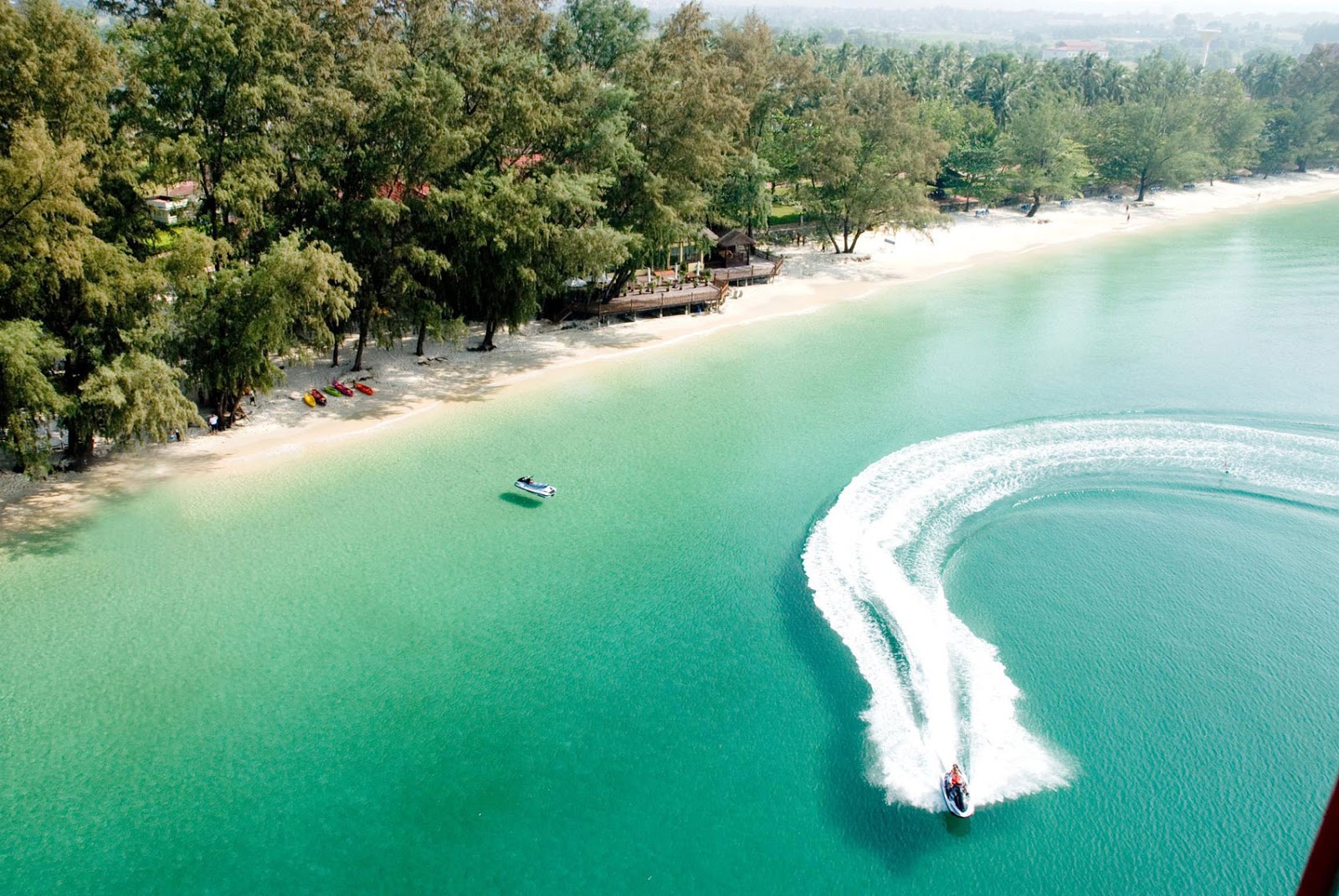
Koh Rong – Cambodia’s Tropical Island Escape
If white sand beaches, turquoise water, and starry skies are calling your name, Koh Rong is where you need to be. Located off the coast near Sihanoukville, this island is a tropical paradise that still feels relatively untouched.
Spend your days snorkeling, hiking, or just swinging in a hammock. For more comfort and fewer crowds, head to the nearby Koh Rong Samloem, a quieter, more eco-conscious alternative perfect for couples or solo travelers seeking peace.
Battambang – Culture and Countryside
Often overlooked, Battambang is a hidden gem filled with colonial-era charm, art galleries, and scenic rice paddies. Ride the quirky Bamboo Train, visit ancient temples like Wat Banan, and explore local life in the surrounding villages.
As Cambodia’s creative heart, Battambang also has a thriving art scene and a growing number of cool cafes and galleries, offering a slower, more authentic taste of Khmer life.
Tonle Sap Lake – Life on the Water
Southeast Asia’s largest freshwater lake, Tonle Sap, is home to unique floating villages and an extraordinary ecosystem. A boat tour offers a glimpse into the lives of communities that live entirely on water—houses, schools, even markets float along the lake’s surface.
The lake is especially full and photogenic during the rainy season (June–October), when it expands massively and supports a rich variety of birds and aquatic life.
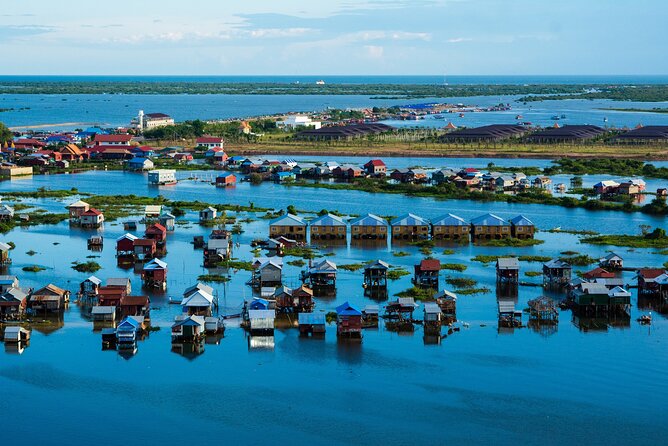
Sihanoukville – Gateway to Cambodia’s Islands
Once a sleepy fishing town, Sihanoukville has transformed into Cambodia’s main coastal hub. Located on the Gulf of Thailand, this port city serves as the primary launching point for ferries to Koh Rong and Koh Rong Samloem—two of the country’s most beautiful islands.
Sihanoukville itself has seen rapid development in recent years, with a growing number of casinos, hotels, and Chinese-funded projects changing the cityscape. However, its beaches—like Otres Beach and Ochheuteal Beach—still offer laid-back vibes, soft sands, and stunning sunsets for those looking to relax before or after an island adventure.
While it may not be everyone’s favorite destination due to the fast-paced changes, Sihanoukville remains a practical stopover and a gateway to Cambodia’s tropical coastline. If you plan to spend the night, opt for accommodations closer to Otres for a more peaceful atmosphere away from the city’s main bustle.
5. National Dishes You Can’t Miss in Cambodia
Cambodian cuisine is a delicious mix of bold flavors, fresh herbs, and local ingredients that reflect the country’s history, geography, and culture. Often overshadowed by its Thai and Vietnamese neighbors, Khmer food is deeply underrated—and once you’ve had your first bite, you’ll wonder why you didn’t discover it sooner.
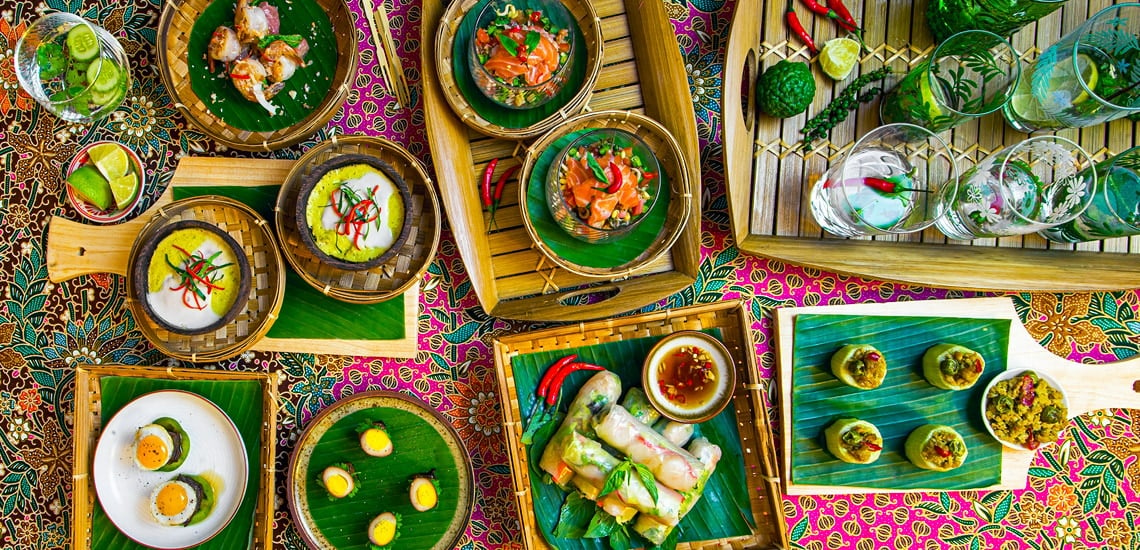
Here are some of Cambodia’s most iconic dishes that every traveler should try at least once:
Amok Trey – Cambodia’s Signature Fish Curry
If Cambodia had a national dish, Amok Trey would be it. This creamy, fragrant fish curry is made with white fish (usually catfish or snakehead), coconut milk, and kroeung—a traditional Khmer spice paste. It’s steamed and often served in a banana leaf cup, topped with coconut cream and kaffir lime leaves.
Don’t miss: Try it in Siem Reap or Phnom Penh for the most authentic version.
Bai Sach Chrouk – Grilled Pork and Rice
A beloved Cambodian breakfast, Bai Sach Chrouk consists of thinly sliced marinated pork grilled over charcoal, served over a plate of broken rice with pickled vegetables and a bowl of clear broth. Simple, filling, and incredibly flavorful—it’s the local’s fuel for the day.
Pro tip: Wake up early—it’s usually sold out by mid-morning.
Nom Banh Chok – Khmer Noodles
Sometimes called “Khmer noodles,” Nom Banh Chok is a light, refreshing rice noodle dish served with a green fish-based gravy and a mountain of fresh herbs, banana blossom, cucumber, and water spinach. It’s especially popular in rural areas and is often served as a morning or midday meal.
Flavor profile: Tangy, herbal, and perfect on a hot day.
Lok Lak – Peppery Stir-Fried Beef
A French-influenced Khmer classic, Lok Lak features tender marinated beef stir-fried in a savory brown sauce and served over lettuce, onions, tomatoes, and cucumbers. It’s often paired with a fried egg on top and a dipping sauce made from Kampot pepper, lime juice, and salt.
Great for: Meat lovers craving something hearty but balanced.
Samlor Korko – Traditional Khmer Stew
This rich and rustic vegetable stew is considered one of Cambodia’s oldest dishes. It includes seasonal vegetables like green papaya, eggplant, pumpkin, and sometimes pork or fish. It's flavored with fermented fish paste (prahok), roasted ground rice, and kroeung.
Cultural tip: It’s often served during family gatherings and festivals.
Prahok – Fermented Fish Paste (The True Taste of Cambodia)
More of an ingredient than a standalone dish, prahok is the backbone of many Khmer recipes. Its strong, salty aroma may be an acquired taste, but it gives Cambodian food its signature punch. It can also be grilled or served fresh with raw vegetables and rice.
Dare to try? Prahok is not for the faint of heart—but it’s a true local experience.
Kuy Teav – Cambodian Noodle Soup
This flavorful noodle soup is a staple breakfast dish, made with a clear pork or beef broth and rice noodles, topped with sliced meat, herbs, bean sprouts, lime, and chili. It’s Cambodia’s answer to pho—and just as satisfying.
Where to try: Street vendors and local market stalls in every city.
Insects – The Adventurous Snack
From crickets and silkworms to tarantulas, Cambodia is one of the few places where fried bugs are not just novelty snacks—they’re part of the culture. High in protein and crunch, these are often sold by street vendors in Phnom Penh and Siem Reap.
Try it if you’re brave: Start with crispy crickets—they're surprisingly tasty!
Final Bite
Cambodian cuisine is all about balance—sweet, salty, sour, and spicy—and every dish tells a story. Whether you’re slurping noodles at a roadside stall or savoring fish amok in a riverside restaurant, you’re in for a flavorful journey that goes beyond the tourist trail.
So come hungry, and get ready to fall in love—one bite at a time.
6. Holidays & Special Events in Cambodia
One of the best ways to experience Cambodia’s vibrant culture is by timing your visit with one of its traditional festivals or national holidays. Rooted in Buddhist beliefs, agricultural rhythms, and centuries-old customs, Cambodian celebrations are colorful, communal, and filled with meaning.
Whether you're joining a water fight during Khmer New Year or watching candle-lit boats float down the river during Bon Om Touk, Cambodia’s festive spirit will leave a lasting impression.
Khmer New Year (Choul Chnam Thmey)
Mid-April (usually April 13–16)
The biggest and most joyful celebration in Cambodia, Khmer New Year marks the end of the harvest season and the start of the traditional new year. It’s a time of family reunions, temple visits, and water fights in the streets.
- What to Expect: Traditional games, sand pagodas, blessings from monks, and a nationwide water-splashing frenzy.
- Where to Celebrate: Siem Reap and Phnom Penh turn into party hubs, but countryside celebrations are more traditional.
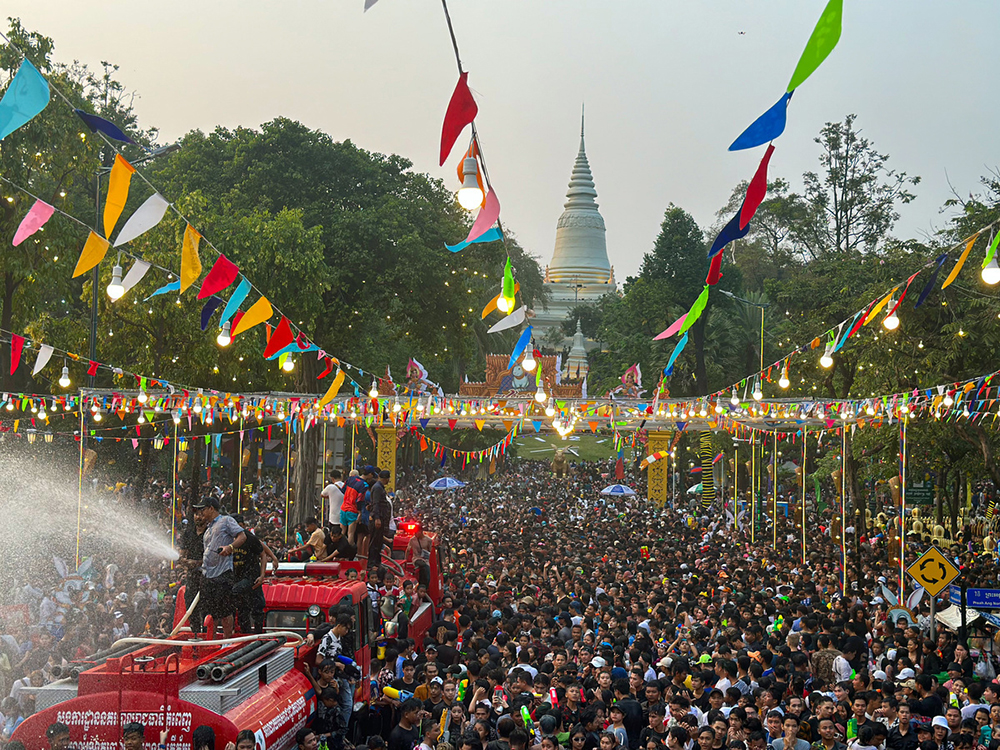
Pchum Ben (Ancestors’ Day)
September or October (15-day period)
This deeply spiritual Buddhist festival is dedicated to honoring ancestors. Cambodians flock to pagodas to make food offerings and pray for their deceased loved ones.
- What to Expect: Early morning ceremonies, monks chanting, and a quiet, respectful atmosphere.
- Tip: Dress modestly and visit local temples to witness the rituals respectfully.
Bon Om Touk (Water Festival)
November (dates vary by lunar calendar)
Held to celebrate the reversal of the Tonle Sap River’s current, the Water Festival is one of Cambodia’s most spectacular events. It marks the end of the rainy season and the beginning of the fishing season.
- What to Expect: Vibrant boat races, illuminated floats, live music, and thousands of people lining the riverbanks.
- Where to Celebrate: Phnom Penh hosts the biggest festivities with days of celebration and fireworks.
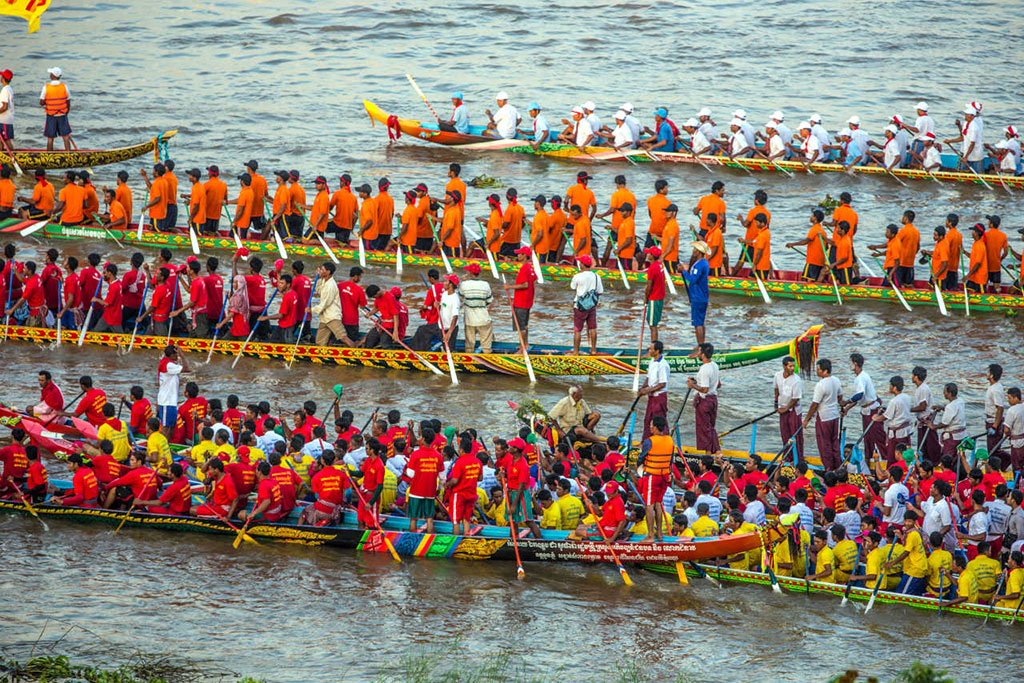
Visak Bochea (Buddha’s Birthday)
April or May (depending on lunar calendar)
This sacred day commemorates the birth, enlightenment, and death of Buddha. Monks lead processions and devotees gather at pagodas for prayer and candle ceremonies.
- What to Expect: Peaceful, reflective celebrations and decorated temples.
- Good to Know: Alcohol sales are often restricted during this time.
Royal Ploughing Ceremony
May (varies yearly)
This ancient ceremony marks the beginning of the rice-growing season and is presided over by members of the royal family. A pair of sacred oxen “predict” the upcoming agricultural season based on the crops they choose to eat.
- Where to See It: Phnom Penh, often near the Royal Palace.
- Cultural Insight: This ceremony blends Hindu and Buddhist traditions.
Final Tip:
Many major holidays follow the Khmer lunar calendar, so dates shift year to year. Always check local listings when planning your trip—and expect some businesses to close during big holidays like Khmer New Year and Pchum Ben.
7. Top Things to Do in Cambodia
Cambodia isn’t just a place to visit—it’s a place to experience. From ancient temples and golden beaches to vibrant cities and floating villages, Cambodia offers a rich variety of activities that cater to every kind of traveler. Whether you’re a history buff, an adventure seeker, or a laid-back wanderer, here are the top things you absolutely shouldn’t miss.
Explore the Majestic Temples of Angkor
Visiting the Angkor Archaeological Park is Cambodia’s number one must-do experience. Start with Angkor Wat, the world’s largest religious monument, and catch the sunrise over its iconic towers. Then explore the mysterious faces of Bayon Temple, the jungle-covered Ta Prohm (famously featured in Tomb Raider), and dozens of lesser-known temples hidden deep within the forests.
Tip: Hire a local guide or tuk-tuk driver to navigate the sprawling site and hear the fascinating stories behind the ruins.
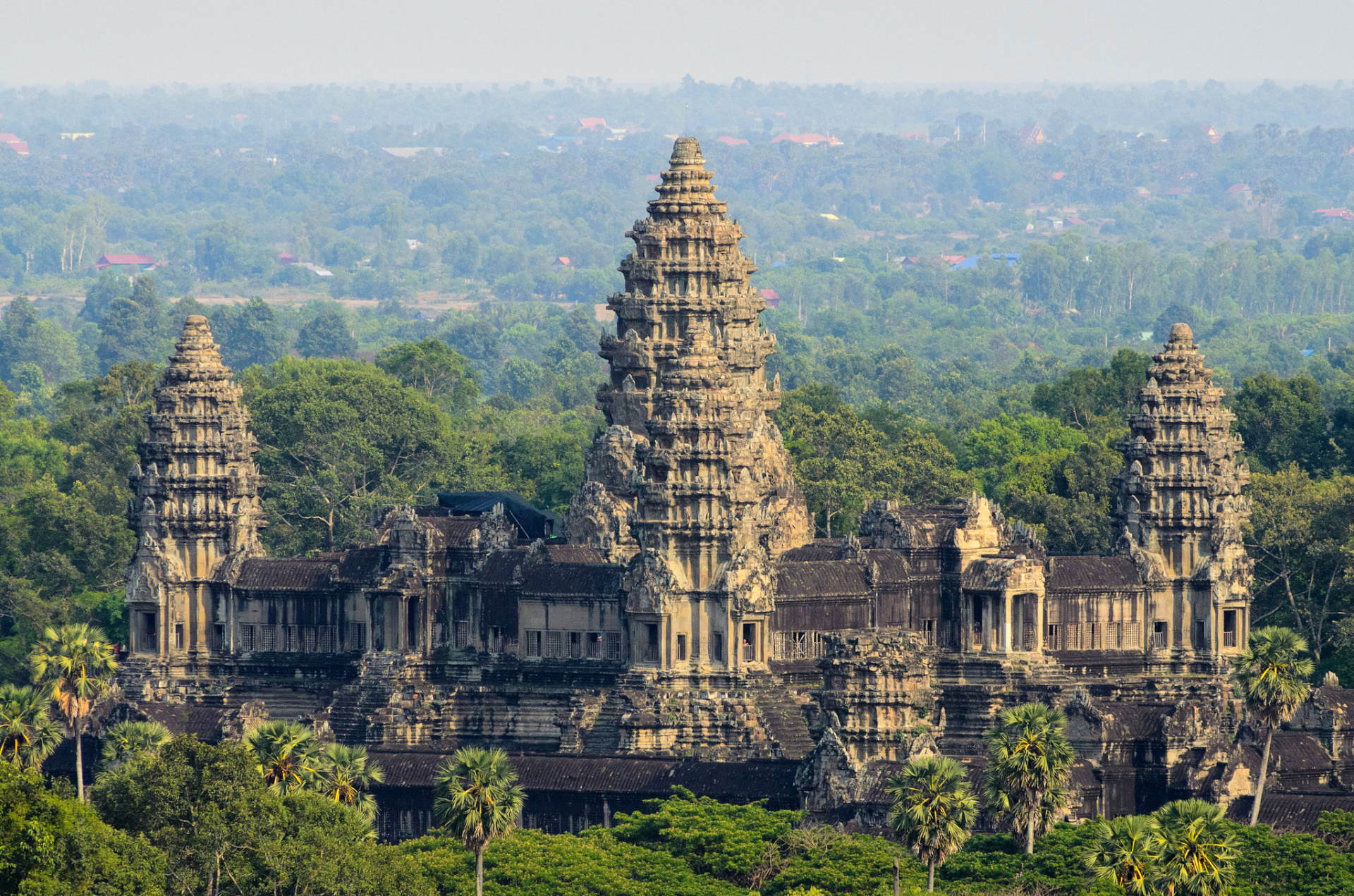
Cruise the Tonle Sap Lake and Visit Floating Villages
Take a boat trip on Tonle Sap Lake, Southeast Asia’s largest freshwater lake, and experience life on the water. Visit floating villages like Kompong Phluk or Kompong Khleang, where schools, houses, and even markets float above the surface. It’s a unique look into rural Cambodian life and the powerful relationship between people and nature.
Relax on Cambodia’s Southern Beaches
Cambodia’s coastline offers beautiful, uncrowded beaches that are perfect for sunseekers. Lounge on the soft sands of Otres Beach in Sihanoukville, island-hop to Koh Rong and Koh Rong Samloem, or enjoy a quiet escape at Kep or Rabbit Island (Koh Tonsay). Expect crystal-clear waters, fresh seafood, and dreamy sunsets.
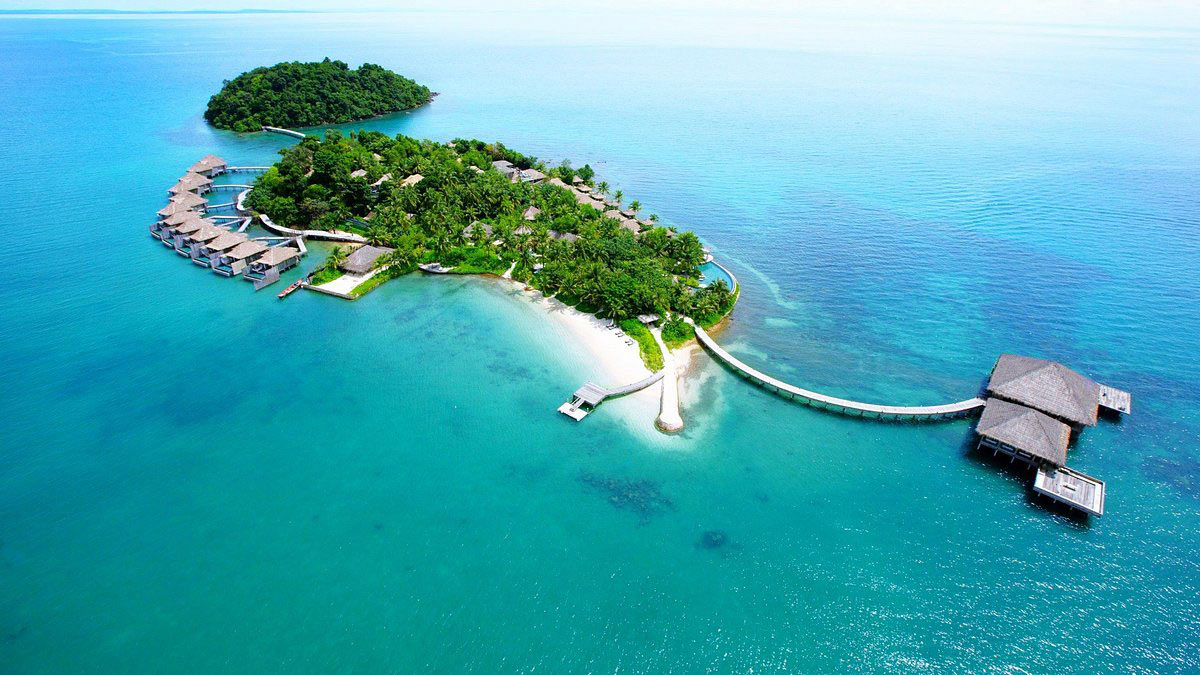
Discover Phnom Penh’s History and Royal Splendor
Cambodia’s capital, Phnom Penh, tells the nation’s story—both glorious and tragic. Visit the Royal Palace and Silver Pagoda to admire traditional Khmer architecture. Then, take time to learn about Cambodia’s past at the Tuol Sleng Genocide Museum and the Killing Fields of Choeung Ek—a somber but essential part of understanding the country's resilience.
Take a River Cruise at Sunset
Hop on a boat for a Mekong River sunset cruise from Phnom Penh. Watch the city skyline light up while floating past local fishing villages and Buddhist temples. It’s a peaceful and beautiful way to end a busy day of sightseeing.
Sample Authentic Khmer Cuisine
Eating your way through Cambodia is a must-do adventure in itself. Try classic dishes like Amok Trey (coconut fish curry), Bai Sach Chrouk (grilled pork with rice), and Nom Banh Chok (Khmer noodles). If you’re feeling adventurous, sample local snacks like fried crickets or tarantulas at a night market!
Explore the Countryside on a Bicycle
Cambodia’s flat landscapes and rural backroads make it perfect for cycling. Rent a bike in Siem Reap or Battambang and ride past rice paddies, sugar palm fields, and traditional villages. It’s one of the best ways to connect with local life and see parts of Cambodia that most tourists miss.
Experience Local Markets and Nightlife
Visit vibrant markets like Phnom Penh’s Russian Market or Siem Reap’s Old Market for souvenirs, spices, and street food. When the sun goes down, Cambodia’s cities come alive—grab a drink at a rooftop bar, watch an Apsara dance performance, or join the backpacker buzz on Pub Street in Siem Reap.
Trek Through National Parks
Nature lovers should not miss Cambodia’s national parks. Bokor National Park near Kampot offers misty forests, abandoned colonial buildings, and incredible viewpoints. Cardamom Mountains is a paradise for eco-tourists, with opportunities for jungle trekking, kayaking, and wildlife spotting.
Join a Traditional Festival
Time your visit to coincide with a local festival like Khmer New Year, Pchum Ben, or the Water Festival. You’ll experience Cambodian culture at its most colorful and joyous—with parades, traditional games, ceremonies, and endless street celebrations.
Cambodia is a land of contrasts: ancient yet youthful, peaceful yet dynamic, rugged yet beautiful. Every corner of the country offers something different, and every moment brings a new discovery. Whether you’re marveling at temples, swimming in turquoise waters, or sharing a smile with a local vendor, you’ll find that Cambodia isn’t just a destination—it’s an experience you’ll never forget.
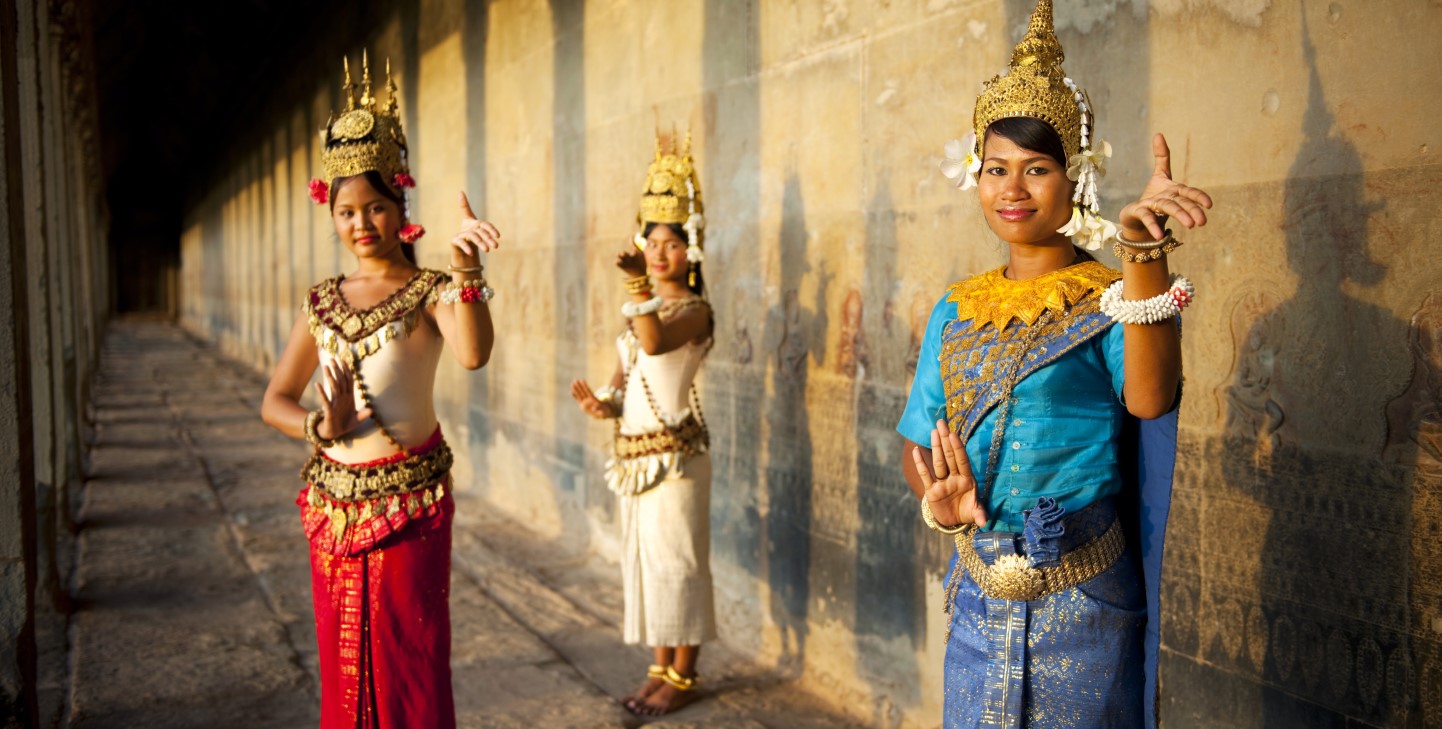
Other Articles
YOU MAY ALSO LIKE
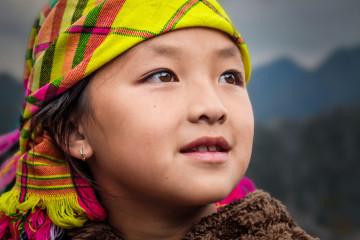
23 DAYS - Private Vietnam 23 Days 22 Nights - Major of VietNam Trip
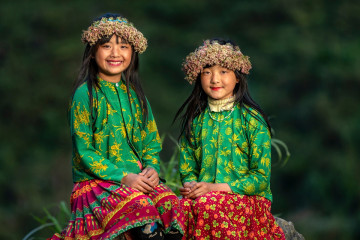
19 DAYS - Private Vietnam 19 Days 18 Nights - Explore Vietnam
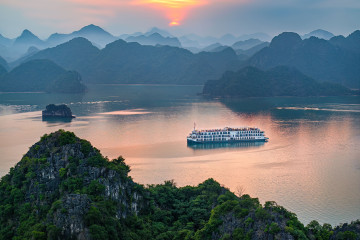
38 DAYS - Private Vietnam- Laos- Cambodia- Thailand 38 Days 37 Nights - Indochina Odyssey
Speak to Your Local Travel Expert





